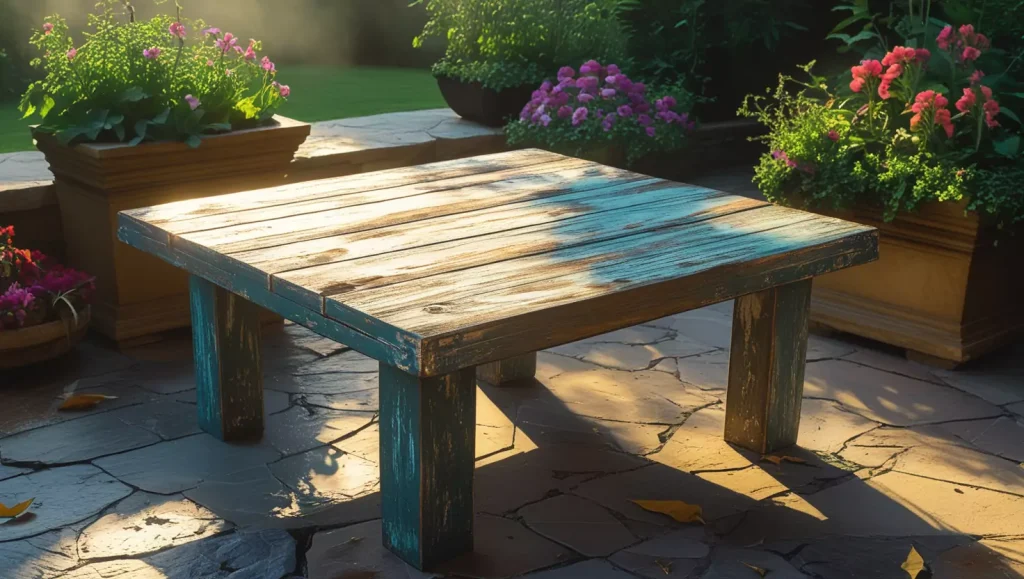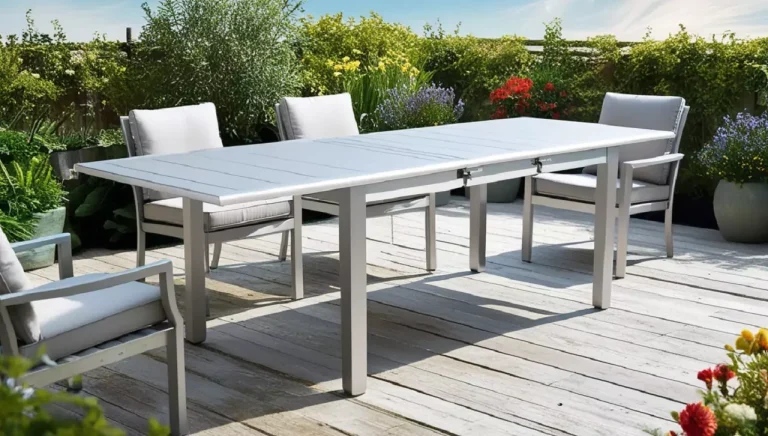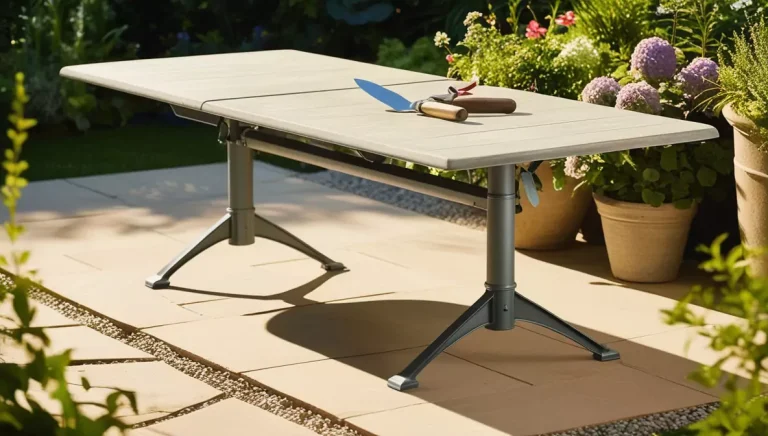4x4 Raised Garden Bed | How it provides the best outcome for you
As someone who’s been gardening for years, Me and one of my friends tried almost every method under the sun.
But one of the best decisions we ever made was embracing the simplicity and versatility of the 4×4 raised garden bed.
Whether you’re a beginner or an experienced gardener looking to maximize your space, this type of garden bed is an excellent choice for growing various plants without overwhelming yourself.
Why Choose a 4×4 Raised Garden Bed?
A 4×4 raised garden bed offers the perfect balance between ample growing space and manageability. Its square design allows for neat layouts and effective planting strategies.
In my experience, this size is just right—large enough to cultivate a variety of vegetables, herbs, or flowers, but small enough to maintain easily, even in a limited backyard or patio space.
Here’s why we believe every gardener should consider adding a 4×4 raised garden bed to their setup:
- Compact but Spacious: You’d be surprised at how much you can grow in a 4×4 bed! With careful planning, you can easily fit multiple types of plants while ensuring they have enough room to thrive.
- Easy to Maintain: The manageable size means less weeding, watering, and general upkeep. If you’re like me, gardening is a pleasure, but sometimes life gets busy. A smaller, organized space makes it easier to stay on top of things.
- Customizable and Versatile: Whether you opt for a kit, go the DIY route, or buy a pre-made one, there’s plenty of room for creativity in design, materials, and layout.
Starting with a 4×4 Raised Garden Bed Kit
Visit : To Learn With Video
When we first started, we was drawn to the idea of a 4×4 raised garden bed kit. These kits are fantastic for beginners or anyone who doesn’t want the hassle of gathering materials from scratch. The convenience of having all the parts pre-cut and ready to assemble can’t be overstated. With detailed instructions included, it’s hard to go wrong.
Many stores sell these kits, but we personally went with a 4×4 raised garden bed from Costco. The one we picked had weather-resistant materials, easy assembly, and a design that fit my backyard perfectly. Costco is known for offering quality gardening supplies, and their 4×4 beds are no exception. Whether you’re just starting or you’re a seasoned gardener like me, Costco’s selection has something for everyone.
Lifetime Raised Garden Bed 3-Pack: Versatile and Durable
Another fantastic option we’ve tried is the Lifetime raised garden bed 3-pack. It’s a bit of an investment upfront, but what you get in return is versatility and durability. Made from high-density polyethylene, these beds are built to withstand the elements, which is crucial if you’re in a region with unpredictable weather like mine.
The real beauty of the 3-pack is that it allows you to configure your garden in various ways. You can place the beds side by side or in different areas of your yard. This flexibility has been invaluable in my garden planning, especially when rotating crops or trying out new plants.
DIY 4×4 Raised Garden Bed: Customization and Creativity
While kits are convenient, there’s something deeply satisfying about creating your own DIY 4×4 raised garden bed. If you enjoy working with your hands and want to personalize your garden bed, the DIY route is the way to go. Plus, you get to choose your materials, whether that’s wood, composite, or even recycled plastic.
For my DIY project, we opted for cedar wood because of its natural resistance to decay and insects. Cedar can be a little pricey, but it lasts for years and gives the garden bed a classic look. The construction process wasn’t too difficult, and there are plenty of 4×4 raised garden bed plans available online to guide you through each step.
4×4 Raised Garden Bed Plan: The Key to Success
Planning is crucial in gardening, and when it comes to a raised bed, you need a solid 4×4 raised garden bed plan. Before you start building, consider the location—make sure your bed gets at least 6-8 hours of sunlight per day. Also, ensure the area is level and has good drainage.
Once your bed is in place, it’s time to plan what to plant. I’m a huge fan of square foot gardening—a method that works perfectly with a 4×4 raised garden bed. This technique divides the bed into 16 one-foot squares, with each square dedicated to a specific plant or group of plants. It’s an efficient way to maximize space, and it’s perfect for keeping everything organized.
Here’s a simple planting plan we often use:
- Corners: In the corners of the bed, plant crops like tomatoes or peppers that need support and grow tall.
- Edges: Along the edges, place herbs like basil, cilantro, or parsley, which tend to stay compact.
- Center: Use the center squares for bushier plants like lettuce, spinach, or even carrots.
This layout not only optimizes space but also takes into account the different growth habits of each plant, allowing everything to grow in harmony.
Building a 4×4 Raised Garden Bed with 4×4 Lumber
If you want your raised bed to last for years, consider building it with 4×4 lumber. This type of lumber is incredibly sturdy and offers extra longevity compared to thinner materials. While it might cost more upfront, the durability is worth it.
I used 4×4 lumber for one of my beds a few years ago, and it’s still going strong. The thick beams give the bed a robust structure, which is great for areas with heavy rain or snow. You can easily build this kind of bed yourself with some basic tools and a good 4×4 raised garden bed plan.
Raised Garden Bed on Legs: Perfect for Small Spaces
One of the most practical solutions we’ve found for gardening in small spaces is a raised garden bed on legs. This design elevates the bed, making it ideal for patios, balconies, or areas where you don’t want to bend over while gardening. It’s also a lifesaver for people with mobility issues or back problems.
A raised bed on legs can be as simple or elaborate as you want. You can buy pre-made models or build your own using a basic plan. When we experimented with this, we used treated wood for the legs to ensure they’d withstand outdoor conditions. we love the flexibility these beds offer—you can place them anywhere, and they look fantastic on a deck or patio.
4×4 Raised Garden Bed Layout
Planning the layout of your 4×4 raised garden bed is essential for maximizing space and ensuring healthy plants. One method we swear by is creating a grid pattern, which helps to organize the planting space more effectively.
Here’s how we typically layout my 4×4 raised garden beds:
- Tall Plants: Place taller plants like tomatoes, peas, or cucumbers on the north side of the bed to prevent them from shading smaller plants.
- Compact Plants: Keep compact plants like lettuces, spinach, or radishes in the front or middle, where they’ll have easy access to sunlight.
- Herbs and Companion Plants: Use the outermost squares for herbs or companion plants like marigolds, which can help deter pests.
Creating a thoughtful layout ensures every plant gets the light and space it needs to thrive, and it makes harvesting a breeze.
4×4 Raised Garden Bed Planting Plans for Maximum Yield
When it comes to planning your garden’s planting arrangement, we always recommend starting with a 4×4 raised garden bed planting plan. A good planting plan considers each plant’s specific requirements—like sun exposure, water needs, and growth habits. It’s also wise to use companion planting techniques to help improve plant health and deter pests.
Here’s a sample planting plan that’s worked well for me:
- Tomatoes and Basil: Plant these two together—they are excellent companions, and basil is said to enhance the flavor of tomatoes.
- Carrots and Onions: These root vegetables grow well together without competing for the same nutrients.
- Lettuce and Radishes: These quick-growing plants can be harvested early in the season, freeing up space for succession planting later.
By following a thoughtful planting plan, you’ll ensure that your 4×4 raised garden bed produces the best possible harvest.
Vita Raised Garden Bed from Costco: An Eco-Friendly Option
If you’re looking for an eco-friendly option, we highly recommend the Vita raised garden bed from Costco. Made from composite materials, it offers a sustainable choice that’s also low-maintenance. we appreciate the focus on durability and sustainability, especially as someone who’s trying to reduce their environmental footprint in the garden.
The composite material is weather-resistant, so you don’t have to worry about it deteriorating over time like wood. Plus, the assembly is straightforward—perfect for those who prefer quick setups without compromising quality.
What to Plant in a 4×4 Raised Garden Bed
One of the main advantages of a 4×4 raised garden bed is its versatility. You can plant a wide range of vegetables, herbs, and even flowers, all within the 16-square-foot space. When it comes to plant selection, you want to maximize the space while ensuring each plant gets the right amount of sunlight, nutrients, and water.
Here’s a breakdown of what you can plant in your 4×4 raised garden bed:
Vegetables
Since space is limited, it’s essential to choose vegetables that thrive in small spaces. You can use companion planting to optimize the bed’s capacity.
- Tomatoes: You can plant 2-4 tomato plants depending on the variety. Keep in mind that tomatoes grow tall and may need staking or a trellis for support. we typically plant cherry tomatoes in my raised bed since they’re compact and easy to manage.
- Leafy Greens: Lettuce, kale, and spinach are perfect for a 4×4 bed. You can plant 4-8 of each variety. we find that greens grow quickly and are easy to harvest from raised beds.
- Carrots: Carrots don’t require much space but do need deep soil. You can plant 8-16 carrots in one bed. Their long roots benefit from the loose soil in raised beds.
- Radishes: These fast-growing vegetables are a great addition to any raised garden bed. You can plant 8-16 radishes alongside your carrots or leafy greens.
- Peppers: Plant 4-6 pepper plants in your bed. They don’t take up much room and thrive in the warm soil of a raised bed.
- Cucumbers: Cucumbers can take up more room unless they’re trellised. You can plant 2-4 cucumber plants and provide a trellis to allow them to climb, maximizing your vertical space.
Herbs
Herbs are perfect for adding flavor to your meals, and they thrive in the compact environment of a 4×4 raised garden bed. Here are some popular choices:
- Basil: Plant 4-8 basil plants around the perimeter of the bed. Basil pairs well with tomatoes, making it a popular companion plant.
- Dill: Dill grows well alongside cucumbers. You can plant 4-6 dill plants in your bed.
- Sage: Sage is a hardy herb that can be planted with vegetables like carrots. 4-6 plants are enough for a 4×4 bed.
Companion Planting
Companion planting is a great way to make the most of your garden space by pairing plants that benefit each other.
- Tomatoes with Basil: Basil helps improve the flavor of tomatoes and can deter certain pests.
- Cucumbers with Dill: Dill attracts beneficial insects and pairs well with cucumbers.
- Carrots with Sage: Sage can help protect carrots from pests.
Flowers
Don’t forget to add flowers to your raised garden bed. Not only do they brighten up the space, but they can also repel pests and attract pollinators.
- Marigolds: These vibrant flowers help repel harmful insects, making them a great addition to any garden bed.
- Nasturtiums: Nasturtiums attract beneficial insects like ladybugs and also deter pests. Plus, their flowers are edible!
How to Build a 4×4 Raised Garden Bed
Building a 4×4 raised garden bed is a straightforward DIY project that can be completed in just a few hours. You’ll need basic materials and tools, and once you’ve finished building, you’ll have a sturdy garden bed that will serve you for years.
Materials Needed
To build a 4×4 raised garden bed, you’ll need the following materials:
- Four 4×4 posts (for corners)
- Eight 2×6 boards (for the sides)
- Screws or nails
- A drill or hammer
- A level
- Quality soil mix (topsoil, compost, and potting soil)
Steps to Build a 4×4 Raised Garden Bed
- Cut the Lumber: Cut your 2×6 boards into 4-foot lengths. These boards will make up the sides of your raised garden bed.
- Assemble the Frame: Attach the 2×6 boards to the 4×4 posts using screws or nails. Make sure the corners are secure, forming a sturdy square frame.
- Level the Bed: Place the frame in your desired location and use a level to ensure the bed is even on all sides. This step is crucial to prevent water from pooling in certain areas.
- Fill with Soil: Fill the bed with a mix of topsoil, compost, and potting soil. A good-quality soil mix will ensure your plants have all the nutrients they need to thrive.
Making Process
The process of making a 4×4 raised garden bed is similar to building one. Whether you’re using wood, composite materials, or stone, the goal is to create a garden space that’s functional and easy to maintain.
Choose Your Location
Select a spot in your yard that gets at least 6-8 hours of sunlight per day. Raised garden beds perform best in full sun, but some plants like leafy greens can tolerate partial shade.
Prepare the Ground
Remove any grass, weeds, or debris from the area where you’ll place the raised bed. You can lay down landscape fabric or cardboard to suppress weeds if needed.
Build the Frame
Follow the same steps outlined above to assemble the frame. Whether you choose cedar, composite wood, or stone, the process is similar. Be sure to secure the corners well and ensure the bed is level.
Add Soil
Once the frame is complete, fill the bed with a high-quality soil mix. we like to use a combination of topsoil, compost, and potting soil to create a nutrient-rich environment for my plants.
How Much Soil Do we Need for a 4×4 Raised Garden Bed?
One of the most common questions we hear is, “How much soil do we need to fill a 4×4 raised garden bed?” Since the bed is 16 square feet and typically around 10-12 inches deep, you’ll need approximately 14.67 cubic feet of soil to fill it.
To break that down further, if you’re buying bags of soil, and each bag contains 1.5 cubic feet, you’ll need roughly 9-10 bags of soil. Make sure to mix in compost or organic matter to provide your plants with the nutrients they need for healthy growth.
Build a 4×4 Raised Garden Bed: A Step-by-Step Guide
Now that you know the basics, let’s walk through the 4×4 raised garden bed plan step by step.
Materials
- Four 4×4 posts (for the corners)
- Eight 2×6 boards (for the sides)
- Screws or nails
- A drill or hammer
- Level
- Soil mix (topsoil, compost, and potting soil)
Steps
- Cut the Lumber: Start by cutting the 2×6 boards into four 4-foot lengths.
- Assemble the Frame: Attach the boards to the 4×4 posts to form a sturdy square frame. Ensure the corners are secured well.
- Level the Bed: Place the frame in your chosen spot and use a level to make sure everything is even.
- Fill with Soil: Fill the bed with a mix of topsoil, compost, and potting soil.
The result will be a strong, durable garden bed that’s perfect for growing vegetables, herbs, and flowers.
Tips for Maintaining Your 4×4 Raised Garden Bed
Once your bed is built and planted, you’ll want to take good care of it to ensure your plants thrive. Here are some tips from my own experience:
- Water Regularly: Raised beds tend to dry out faster than in-ground gardens, so make sure to water your plants regularly, especially during hot, dry periods.
- Mulch: Adding a layer of mulch around your plants helps retain moisture and suppress weeds.
- Fertilize: Even though your soil mix will be nutrient-rich, it’s a good idea to add compost or organic fertilizer throughout the growing season.
- Rotate Crops: To prevent soil depletion and pests, rotate your crops each season. For example, follow tomatoes with beans or leafy greens the next year.
Conclusion
Creating a 4×4 raised garden bed is one of the best ways to start a successful home garden. Whether you’re growing vegetables, herbs, or flowers, the compact size allows for easy maintenance while offering plenty of space to grow various plants. By following a solid 4×4 raised garden bed plan, you can build a functional and beautiful garden that will provide fresh produce and joy for years to come.
From selecting the right plants to building the bed itself, gardening in a raised bed offers endless opportunities to enjoy the rewards of growing your food and enhancing your outdoor space. So, gather your materials, plan your layout, and start building your very own 4×4 raised garden bed today!











